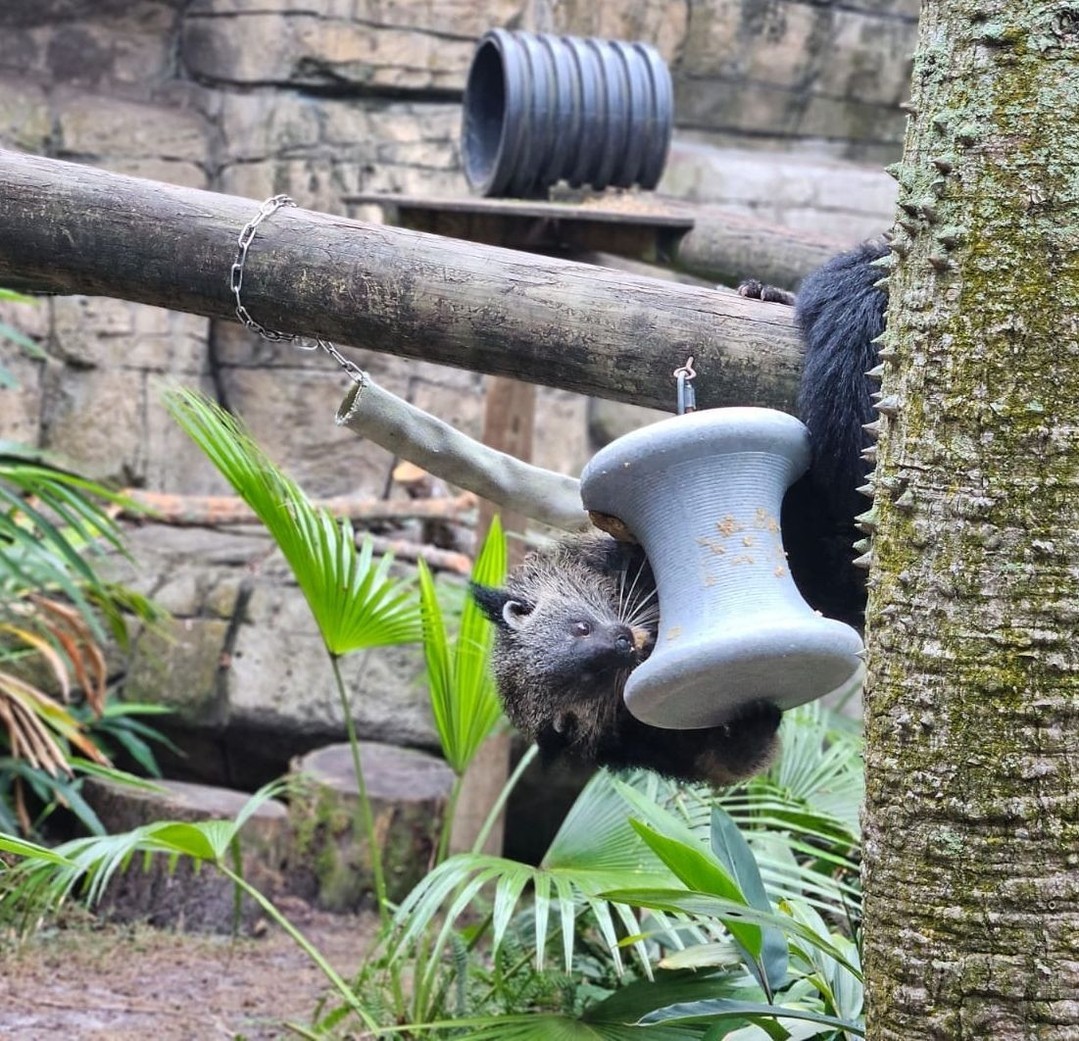- Understanding the unique characteristics and behaviors of the Binturong, with a focus on its prehensile tail.
- Exploring the role of enrichment in Binturong welfare, particularly how Melati engages with her environment.
- The significance of Binturongs in their native ecosystems and their status in conservation efforts.
- Insights into zoo management practices that enhance the well-being of Binturongs like Melati.
- Encouraging public education and involvement in Binturong conservation through interactive zoo experiences.
The binturong, also known as the bearcat, is an intriguing mammal native to South and Southeast Asia. One fascinating member of this species is Melati, a binturong that has garnered public attention due to her engaging demonstrations with her prehensile tail. While some may mistake these creatures for bears or cats, they are actually more closely related to civets and genets. This article delves into the biology and behavior of binturongs, with Melati as a prime example, emphasizing her lifestyle, habits, and the vital role conservation and zoo management play in their survival and public education.
Binturongs, like Melati, possess distinctive physical features that captivate onlookers. One standout trait is their prehensile tail, which serves as a versatile tool. This tail acts as an extra limb, providing balance and grip while navigating tree canopies and collecting food. For Melati, this means her tail is crucial for reaching her favorite enrichment items, keeping her physically active and mentally stimulated. This appendage is not just for show; it is an adaptation allowing binturongs to thrive in their arboreal environments. The tail’s strength and flexibility are critical for ensuring the species’ feeding habits and interactions with their surroundings.
Enrichment is central to Melati’s care and reflects broader best practices in zoo wildlife management. Binturongs are naturally curious creatures, and offering them varied and stimulating environments replicates their natural activities and challenges. For Melati, enrichment activities might include puzzles that encourage problem-solving or toys that mimic natural objects found in the wild. This approach keeps binturongs engaged and deters behaviors linked to captivity boredom while promoting physical health. Balanced enrichment satisfies their curiosity and promotes natural behaviors, contributing to longer, healthier lives in managed settings.
The broader significance of binturongs extends beyond individual animals like Melati. They play a crucial role in their native ecosystems as seed dispersers. By eating fruits and subsequently depositing the seeds, they help maintain forest biodiversity. However, binturongs face growing threats from habitat destruction, logging, and poaching, which have led to a decline in their population. Understanding their ecological role helps underline the importance of conservation efforts to maintain healthy forest ecosystems. Conservation programs aim to preserve their habitats and educate communities about sustainable practices.
Zoo management practices at institutions housing binturongs like Melati prioritize these animals’ needs by providing specialized care plans. This involves not only physical enrichment but also attention to dietary requirements, medical care, and social interactions. These measures align with modern zoological standards that prioritize animal welfare and global conservation needs. Facilities use extensive research to replicate natural habitats and behaviors as closely as possible, offering lighting, foliage, and resting spaces that mimic the environment binturongs are accustomed to in the wild.
Public education is a pivotal part of zoological efforts to conserve species like the binturong. By creating interactive experiences with animals like Melati, zoos foster a connection between visitors and wildlife. These interactions are educational opportunities, immensely valuable for conveying the importance of preserving biodiversity. They teach about binturongs’ habits, roles in the ecosystem, and the need for conservation efforts. With increasing awareness, visitors can support conservation initiatives and advocate for policies that protect endangered species and habitats.
The role of binturongs, particularly within zoo settings like Melati’s, is multifaceted. They serve as ambassadors for their species, highlighting the importance of conservation and the challenges they face in the wild. Through well-managed care, zoos contribute to the positive welfare of individual animals while playing a part in broader conservation strategies. By observing Melati’s interactions and behaviors, visitors gain insight into the ecology and importance of these unique animals in their native environment.
Overall, Melati serves as a bridge between the wild and human societies, showcasing the critical role that zoos play in species conservation and education. Her presence highlights the necessity of tailored care and enrichment to meet binturongs’ needs, demonstrating the careful balance of science, empathy, and public involvement crucial to ongoing conservation efforts. By learning more about binturongs and supporting zoos in their endeavors, we move closer to preserving these extraordinary animals and their natural habitats for generations to come.
*****
Source Description
Hanging out with our Binturong, Melati! 🤙
With a prehensile tail, reaching enrichment is a breeze! Binturongs use their strong tails as an extra arm, helping to support them as they stretch out for their favorite food items.


